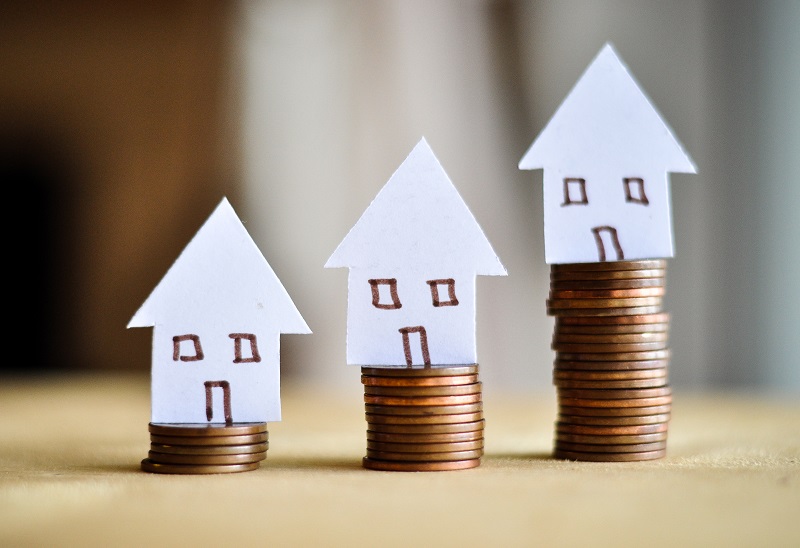
18 Aug Will hot housing markets in Texas ever cool down?
In Texas, where oil drilling and the rugged frontier are deeply embedded in state mythology, the natural economic cycle of boom and bust is familiar.
But in recent years, one sector of the state’s red-hot economy seems to have overcome the laws of gravity. The Texas housing market, and the growth of its big cities, has become a boom that some see developing into a bubble. After outpacing much of the country’s housing growth, one may assume that a reverse in course is nigh for Texas.
Some analysts, though, see things differently: Texas real estate isn’t just booming. It’s evolving.
According to Dr. Jim Gaines, chief economist at the Real Estate Center at Texas A&M, the state is experiencing a fundamental shift. Based on data from the center’s most recent Texas Housing Insight report, released earlier this month, he sees the state in the midst of a long expansion, as it becomes not just a leading state, but perhaps a center for growth for the U.S. for years to come.
The state’s two largest metro areas, Houston and Dallas-Fort Worth, exemplify the state’s evolution. Last year, both cities issued more single-family housing permits than any other cities in the country, including fast-growing cities like Seattle. That alone isn’t shocking, considering they’re metro areas of 7.1 million (Dallas-Fort Worth) and 6.4 million (Houston) people. But both areas also issued more new housing permits than most states.
Dallas built 29,000 homes last year, according to data gleaned from Metrostudy. The entire state of California only added 88,000 units.
California had a huge boom, from the postwar period through the ’90s. Florida saw a population explosion in the 20th century. Now, Gaines says, it’s simply Texas’s turn.
“We’re going through the same political and social/sociological effect that happened in Florida, New York, and California,” says Gaines. “The public sector almost can’t keep pace with this growth. The good news in Texas is that land is plentiful.”
Has growth become a new normal?
The upswing in Texas real estate has been ongoing, according to Gaines. The state bounced back relatively soon after the recession of the late aughts, due in part to a strong energy market in 2010 and 2011. For the most part, it hasn’t looked back. Dallas alone has added 717,000 jobs since 2010, according to data from CBRE, a commercial real estate firm.
The consequence of this long winning streak—especially in relation to relatively stagnant economic growth in other states—is that home demand has outpaced supply. Gaines says an era when home values in Texas appreciated at a steady, pedestrian 4 or 4.5 percent have been eclipsed by the last few years, where the jump has been roughly 7 to 9 percent.
Home prices in the Dallas-Plano-Irving area shot up 7.5 percent last year, according to Corelogic Data, and 3.4 percent in Houston. Even foreign buyers are seeing the value, with 12 percent of international real estate investment taking place within Texas.
/cdn.vox-cdn.com/uploads/chorus_asset/file/9052545/housingstarts.jpg) Real Estate Center at Texas A&M University
Real Estate Center at Texas A&M UniversityThe most recent Outlook for the Texas Economy report, also issued by the Texas A&M Real Estate Center, reinforces how much the housing boom is tied to the growing economy. Texas is leading the nation in real GDP growth last quarter, hitting 3.9 percent last quarter, more than double the 1.4 percent U.S. average.
Every major Texas city is posting at least a 3 percent growth rate, with Austin’s skyrocketing at 5.3 percent. And perhaps even more vital to the state’s hot property market, employment is also much healthier than the rest of the country. The state added 40,200 new jobs in June alone, part of the 168,000 added this year, and statewide unemployment dropped to 4.6 percent.
“The Texas economy consistently grows faster than the nation,” says Anil Kumar, an economic policy advisor and senior economist at the Federal Reserve Bank of Dallas. “It’s typically about one percentage point better than the nation, unless there’s some serious oil price collapse. This is the new normal going forward, as opposed to something that is approaching a correction.”
In fact, many analysts see things getting even better in 2017. CBRE’s 2017 Texas Executive Brief predicts growth due to strong economic fundamentals in all the state’s big cities: Growth in Dallas justifies expansion and continues to attract new retailers; developers have confidence in Austin’s continued growth; and Houston has favorable demographics and “record-breaking” retail demand.
The boom has brought corporations and jobseekers to Texas in massive numbers. Since 2010, more than 800,000 people have moved into the Dallas area alone; that’s more than the population of Washington, D.C. Last year, the city’s population increased by 143,000, and of the eight largest cities for population growth in the U.S. last year, five of them (Dallas, Fort Worth, Houston, Austin, and San Antonio) are in Texas.
/cdn.vox-cdn.com/uploads/chorus_asset/file/9052569/texasmetro.jpg) Real Estate Center at Texas A&M
Real Estate Center at Texas A&M Even despite this growth, Texas has many of the same housing problems plaguing the country. Affordability is a huge issue—Gaines estimates the state is 300,000 units short of fulfilling the demand for affordable housing, and stagnant wages dragged the Texas Housing Affordability Index to its lowest point since the housing crisis. In 2011, more than two-thirds of the Dallas metro housing stock was under $200,000. Now, it’s just 39 percent.
But in spite of the steady climb in prices, Texas is still a relative bargain compared to the rest of the U.S. The median price for a new home in Texas is $281,647, a fraction of what it costs in many metro areas, especially coastal ones. And that may be the true key to Texas’s long-term growth. Despite expanding cities and new housing starts, the Lone Star State has plenty of room to grow.
“The recession was irrational exuberance,” says Gaines. “What’s happening here is clearly based on fundamentals.”



